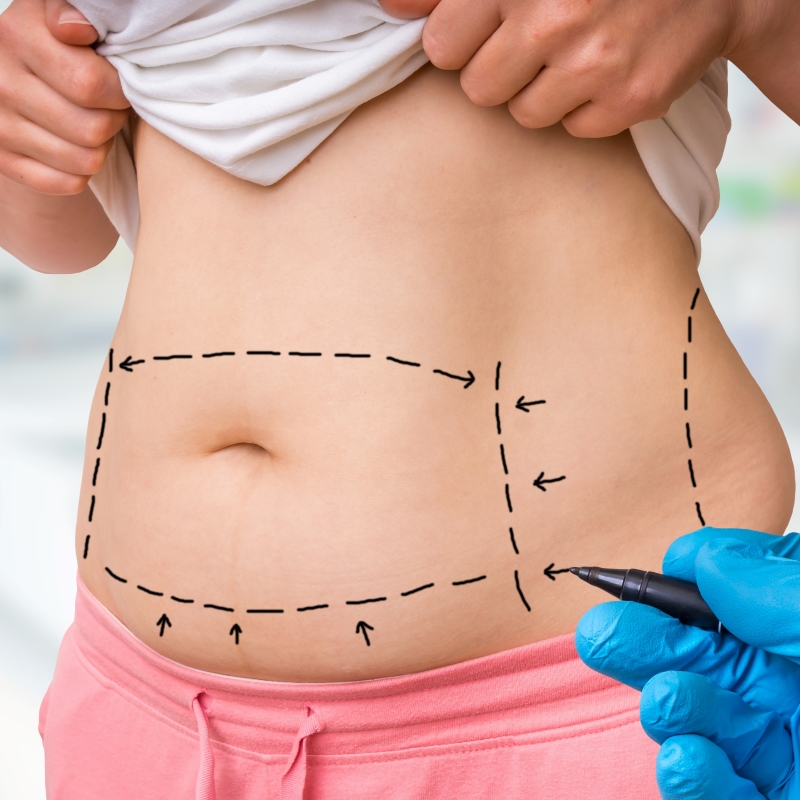Fat transfer surgery, also known as fat grafting or fat injection, is a procedure that uses your body’s own fat to restore volume, enhance contours, and rejuvenate different areas. It is a versatile procedure often used for facial rejuvenation, body contouring, and even breast or buttock augmentation. This comprehensive guide will provide an in-depth look at the process, benefits, risks, and recovery of Fat Transfer Surgery in Dubai.
What is Fat Transfer Surgery?
Fat transfer surgery involves removing fat from one part of the body (donor area) and transferring it to another area where volume is needed (recipient area). The procedure is ideal for patients who want to enhance specific body areas using their body’s own natural fat, avoiding synthetic fillers or implants.
Common Uses of Fat Transfer Surgery:
- Facial Volume Restoration: Reduces wrinkles, fills hollow areas, and plumps up lips or cheeks.
- Breast Augmentation: A natural alternative to implants, adding subtle volume and improving shape.
- Buttock Augmentation: Known as the Brazilian butt lift, it enhances the size and shape of the buttocks.
- Hand Rejuvenation: Adds volume to aging hands, reducing the visibility of veins and tendons.

The Fat Transfer Process
Step 1: Fat Harvesting
Fat is harvested from areas with excess fat using liposuction. Common donor sites include the abdomen, thighs, or flanks. The liposuction is minimally invasive, involving small incisions to remove the fat.
Step 2: Fat Purification
Once the fat is extracted, it is processed and purified to separate the healthy fat cells from other fluids and impurities. Only purified fat cells are used for reinjection, ensuring the best results.
Step 3: Fat Injection
The purified fat is then strategically injected into the targeted area. The surgeon will meticulously layer the fat to achieve smooth, natural-looking results. This injection process requires precision to ensure even distribution and long-lasting effects.
Benefits of Fat Transfer Surgery
Fat transfer surgery offers several benefits compared to other cosmetic procedures:
- Natural Results: Because your own fat is used, the results are more natural-looking and feeling compared to synthetic fillers or implants.
- Dual Benefit: Not only does the procedure enhance the recipient area, but it also slims the donor area, offering body contouring benefits.
- Minimal Scarring: The incisions for both the liposuction and fat injection are small, resulting in minimal scarring.
- Long-Lasting Results: Once the fat integrates into the new area, the results can be permanent, with proper care.
Who is a Good Candidate?
Fat transfer surgery is ideal for individuals who:
- Have excess fat in certain areas for harvesting.
- Are looking for a natural alternative to fillers or implants.
- Are in good general health and have realistic expectations for the outcome.
- Desire subtle and natural-looking enhancements rather than dramatic changes.
It’s also important for candidates to be non-smokers, as smoking can affect healing and the survival of transferred fat cells.
Risks and Considerations
Like any surgery, fat transfer involves some risks. While the procedure is generally safe, potential complications can include:
- Fat Absorption: Some of the transferred fat may not survive and get absorbed by the body over time, reducing the volume.
- Infection: As with any surgical procedure, there is a small risk of infection.
- Asymmetry: If fat absorption is uneven, it may result in slight asymmetry, which may require touch-up procedures.
- Fat Necrosis: Rarely, some fat cells may die, causing small lumps or firmness in the treated area.
These risks can be minimized by choosing a skilled and experienced surgeon.
Fat Transfer Surgery Recovery
Recovery from fat transfer surgery varies depending on the extent of the procedure and the areas treated. Below is a general overview of what to expect during recovery:
First Few Days:
- Expect swelling, bruising, and discomfort in both the donor and recipient areas. These symptoms usually subside within a few days to weeks.
- You may be required to wear compression garments over the donor area to reduce swelling and support healing.
First Few Weeks:
- Most patients can return to light activities within a week, but strenuous exercise and heavy lifting should be avoided for about four to six weeks.
- Swelling will gradually decrease, but it may take several weeks to fully subside.
Final Results:
- The final results become more visible once the swelling has completely gone down, typically after three to six months.
- Any areas that need additional volume or fine-tuning can be addressed in follow-up sessions if necessary.
Combining Fat Transfer with Other Procedures
Fat transfer surgery is often combined with other procedures to enhance overall results. Some popular combination treatments include:
- Facelifts: Fat transfer can add volume to areas of the face while a facelift tightens loose skin.
- Liposuction: In some cases, fat transfer is performed alongside traditional liposuction to further contour the body.
- Breast Lifts: Adding fat transfer to a breast lift can enhance volume and shape for a more youthful look.
Combining procedures allows patients to achieve multiple aesthetic goals with one recovery period.
How Long Do the Results Last?
One of the most frequently asked questions is how long the results of fat transfer surgery will last. While some of the injected fat may be absorbed by the body over time, a significant portion typically remains in place. With proper care, the results of fat transfer surgery can be long-lasting, especially if you maintain a stable weight and follow a healthy lifestyle.
Choosing the Right Surgeon
The success of fat transfer surgery heavily depends on the surgeon’s expertise. It’s crucial to choose a board-certified plastic surgeon with experience in fat grafting techniques. During your consultation, ask to see before-and-after photos of previous patients to get a sense of the surgeon’s work. Additionally, discuss your goals and expectations in detail to ensure the procedure aligns with your aesthetic desires.
Conclusion
Fat transfer surgery is a versatile, natural, and effective solution for individuals looking to enhance their appearance by adding volume to specific areas. Whether it’s for facial rejuvenation, breast or buttock augmentation, or overall body contouring, fat transfer surgery offers long-lasting and natural results. By understanding the process, risks, and benefits, you can make an informed decision about whether fat transfer surgery is right for you.





Comments